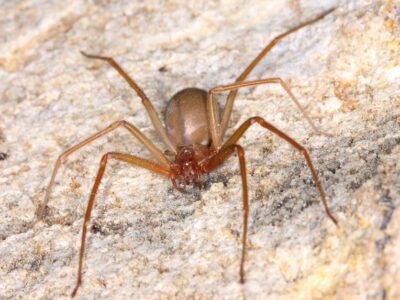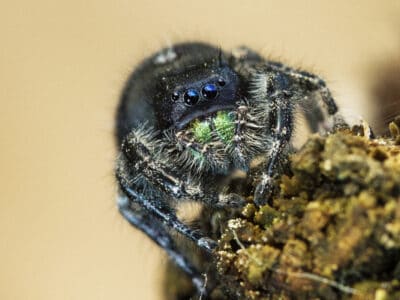Spider
Advertisement
Spider Scientific Classification
Spider Facts
- Diet
- Omnivore
Spider Physical Characteristics
View all of the Spider images!
Spiders are eight-legged arachnids that live across almost all of Earth aside from Antarctica. As of 2022, there are nearly 50,000 species of spiders living across nearly every major biome. Spiders range from incredibly tiny – the smallest spider is a fraction of the size of a pinhead – to giant spiders that can measure a foot across.
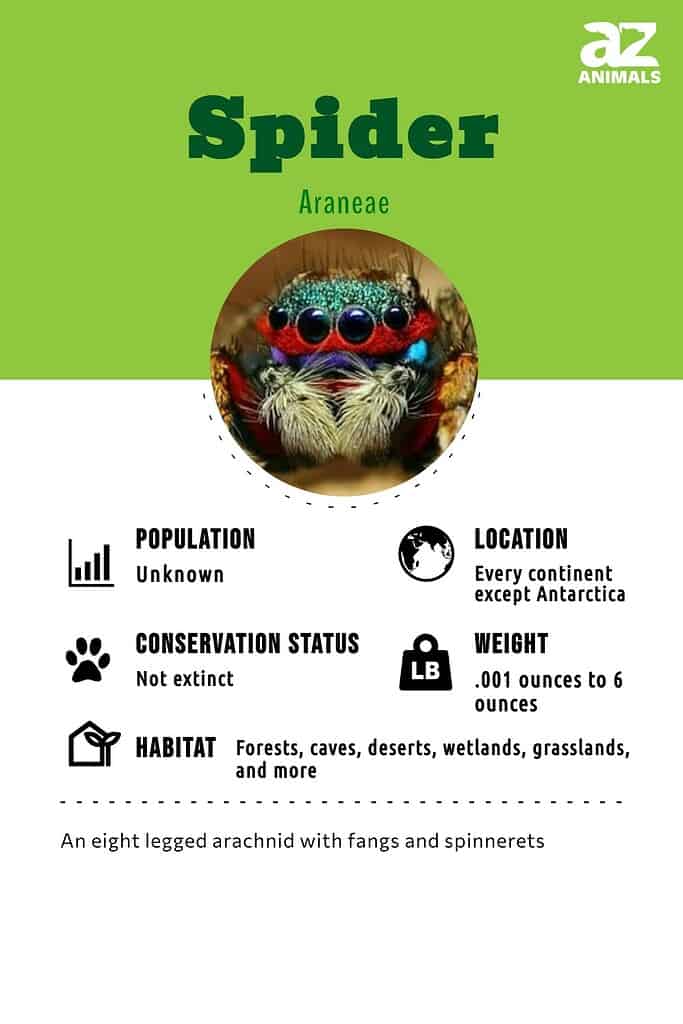
Spider Facts
- The largest spider in the world is the giant huntsman spider. It measures a foot wide across its legs. Incredibly, this spider was only discovered this century and lives in caves in the country of Laos.
- The oldest known spider lived to be 43 years old. It was a trapdoor spider in Australia and didn’t even die from old age. Instead, it was killed by a tarantula hawk that laid its eggs in the spider.
- How’s this for dedication? The black lace-weaver spider has evolved so spiderlings that hatch eat their mother alive. The name for offspring consuming their mothers is named “matriphagy” and is displayed in several spider species.
- A spider named Darwin’s bark spider produces a web that’s 10-fold stronger than Kevlar. Its silk is the toughest biological material ever discovered.
- Are spiders masters of disguise? More than 300 species put their front legs on the top of their heads to disguise themselves as ants. This behavior helps them both avoid and eat ants.
Scientific Name
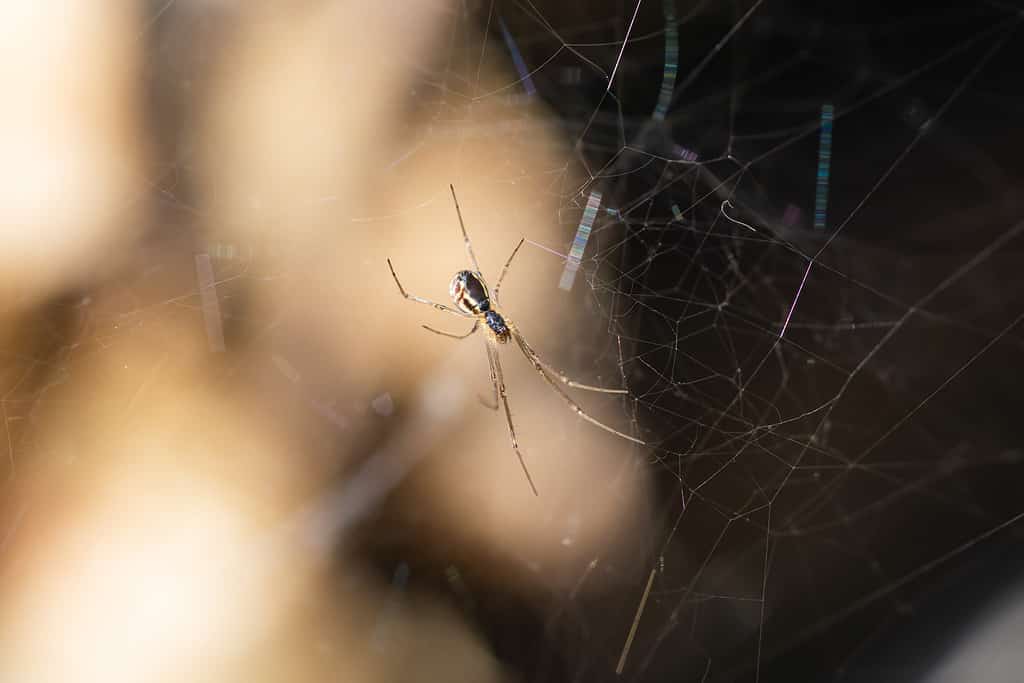
Sheet web weavers aren’t commonly spotted. They are sneaky spiders.
©Erik Agar/Shutterstock.com
What is the scientific name for spiders? The scientific name for spiders is Araneae, and they are air-breathing arthropods with eight legs, fangs that can inject venom, and spinnerets that secrete silk. This group of arachnids is one of the most diverse among all living organisms and can be found on every continent except Antarctica. As of today, 50,356 spider species have been recorded and categorized into 132 families, though there is some debate among scientists about how these should be classified, with over 20 different classifications proposed. A group of spiders is known as a cluster, clutter, or sometimes a colony.
Appearance and Behavior
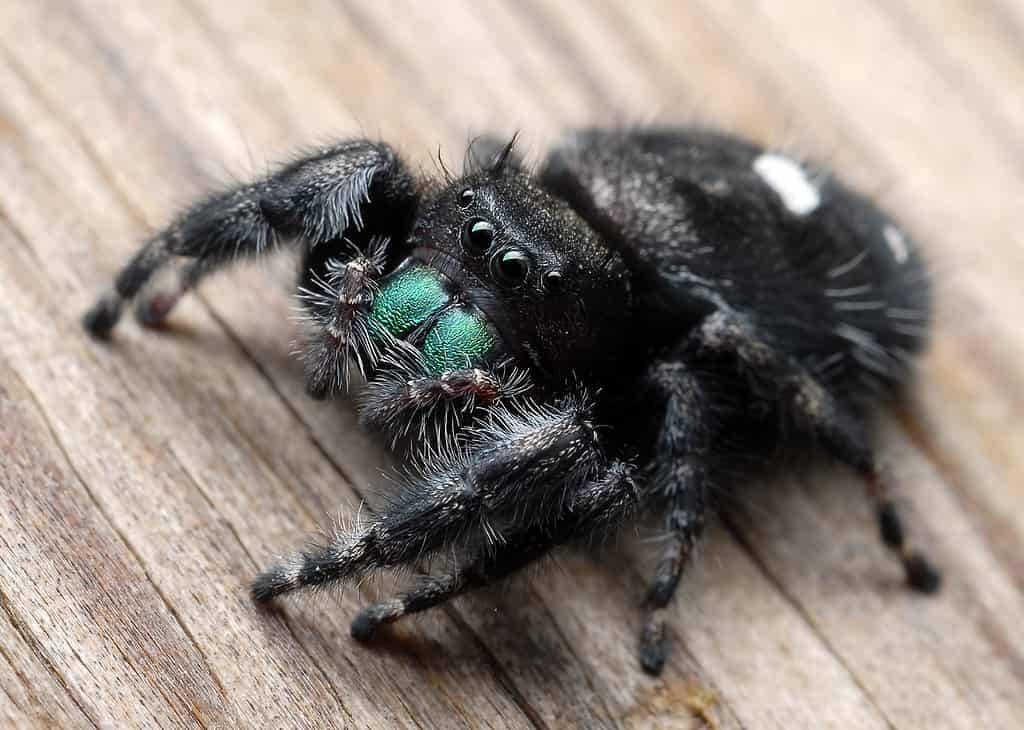
Spiders can have multiple spinnerets, as many as eight!
©Miles Boyer/Shutterstock.com
The physical makeup of spiders is distinct from other arthropods in that their typical body parts are combined into two sections, a cephalothorax, and an abdomen, connected by a thin tube-like pedicel. This naming of this structure has been disputed, as there is no fossil or embryonic evidence to suggest that the head and thorax were ever separated. The abdomen of each spider contains the heart and breathing organs. All spiders have eight legs. Many of them have fangs that can excrete a venomous substance.
Spiders have silk-spinning organs called spinnerets on their forelegs or under their abdomen. Some spiders have six, two, four, or eight spinnerets that they can move in unison or separately as they so desire. The spinnerets do not only release one thread of silk but are complex and contain many spigots that each release a fine stream of silk. Spiders can also produce different types of silk for different types of projects or combine silks to make them stronger. Some spiders have very large spinnerets consisting of a spigot that stretches the length of their abdomen, such as the desert grass spider.
Spiders use their silk for various purposes, such as building webs to live in, building webs to catch prey, constructing egg sacs, transferring sperm, encapsulating insects, creating balloons to fly, weaving structures to protect themselves from predators, assembling cocoons and manipulating static electricity in the air.
Spiders differ from insects in that they do not have antennae. Most spiders have a highly centralized nervous system, meaning that all their ganglia are joined together in the cephalothorax. Additionally, spiders do not use their extensor muscles to extend their limbs but rather rely on hydraulic pressure.
Evolution and Origins
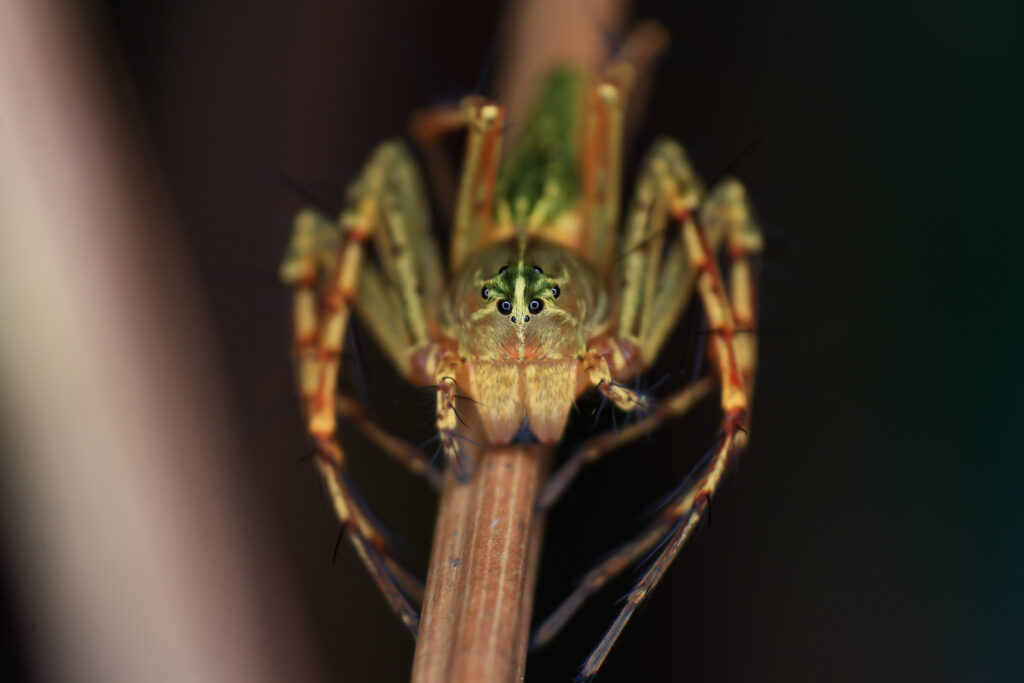
Spiders existed on earth before humans and dinosaurs.
©Firdaus Khaled/Shutterstock.com
Humans have been around for a much shorter period of time than spiders, who likely evolved approximately 400 million years ago. The earliest spiders were likely descended from arachnids that had recently left their aquatic homes. Fossils like Attercopus fimbriungus, which lived 380 million years ago during the Devonian Period, demonstrate that spiders existed long before the dinosaurs.
The earliest segmented spider fossils belonged to the Mesothelae group, which had spinnerets positioned in the middle of their abdomens instead of at the end, like modern spiders. It is thought they were predators on the ground, living amongst fern and moss during the Palaeozoic era and hunting primitive creatures like slaters, millipedes, silverfish, and cockroaches. It is possible that these spiders used silk for protection for their eggs, to line a shelter hole, and later for constructing sheet webs and trapdoors.
As plants and insects evolved, so did spiders’ use of silk. Spiders with spinnerets on their abdomens (Opisthothelae) emerged over 250 million years ago, which likely encouraged the production of more complex webs to capture prey on the ground and in trees. During the Jurassic Period, when dinosaurs roamed the planet, orb-weaving spiders developed aerial webs to catch the increasing variety of flying insects. Additionally, hunting spiders in different habitats also started to diversify in order to catch more prey and occupy more habitats.
The fossil record of spiders is not very extensive. However, amber fossils of spiders, which are complete spiders trapped in tree resin, show us that a spider population similar to today’s existed 30 million years ago. Additionally, segmented spiders have survived in East Asia since the late Palaeozoic period until now. They live in caves and burrows and build trapdoors over them. They have not changed much from their ancestors.
Habitat

The forest
wolf spider
can reach nearly 50 millimeters long with its legs extended.
©Will E. Davis/Shutterstock.com
There are a variety of habitats where spiders can be found. Most species of spiders prefer living outdoors, where they build webs or hunt for prey on the ground or among vegetation. Common outdoor habitats include forests, fields, gardens, and deserts.
Spiders can also live indoors, particularly in areas such as basements and attics that are dark and undisturbed by humans. Additionally, many species of spiders will make their homes near water sources like ponds and streams in order to have easy access to food sources like insects that congregate around bodies of water.
Lastly, some aquatic spider species inhabit freshwater rivers and lakes, where they hang out underwater by weaving air bubbles into silken nests from which they breathe oxygen while submerged beneath the surface.
Habitat

Spiders live in deserts, forests, fields, and gardens.
©Jay Ondreicka/Shutterstock.com
There are a variety of habitats where spiders can be found. Most species of spiders prefer living outdoors, where they build webs or hunt for prey on the ground or among vegetation. Common outdoor habitats include forests, fields, gardens, and deserts.
Spiders can also live indoors, particularly in areas such as basements and attics that are dark and undisturbed by humans. Additionally, many species of spiders will make their homes near water sources like ponds and streams in order to have easy access to food sources like insects that congregate around bodies of water.
Lastly, some aquatic spider species inhabit freshwater rivers and lakes, where they hang out underwater by weaving air bubbles into silken nests from which they breathe oxygen while submerged beneath the surface.
Diet

This large Yellow Garden Spider is eating a
butterfly
that it captured.
©samray/Shutterstock.com
Spiders are carnivores and feed mainly on insects, usually their own prey. Depending on the species, they can also consume other spiders, small mammals, and reptiles. For most of them, however, the main food sources are flying or crawling insects such as flies, moths, and ants. Some spider species will even eat small amphibians or fish if they come across them.
The type of diet for a particular spider species depends largely on its size; larger spiders have more options when it comes to potential prey items than smaller ones do. A few types of spiders survive solely by scavenging dead animals or consuming nectar from plants instead of living organisms like insects. In addition to these dietary habits, some spiders use toxins in the form of venom injected into their victims to make them easier to digest before consuming them whole.
Predators

Birds, ants, and lizards all consumer spiders.
©boyphare/Shutterstock.com
Spiders are voracious predators, but what animals eat spiders? With the vast majority of spiders being less than a couple of inches in width, the main answer is that animals that also eat smaller insects will eat spiders as well. Animals like frogs, birds, and lizards are top predators of spiders.
In a controlled simulation meant to mimic conditions on an island, researchers tested spider populations with and without lizards. They found that after four days without lizards, 65% of spiders had survived. However, when lizards were introduced, only 40% of spiders remained at the end of the study. This is to say; lizards can deplete spider populations very rapidly.
Other animals that eat spiders are fish, snakes, toads, tarantula hawks, scorpions, spider wasps, centipedes, other spiders, bats, and small mammals like shrews.
It is also important to know that despite spiders being part of the diet of snakes, there are some species of spiders that eat snakes.
Reproduction and Lifecycle
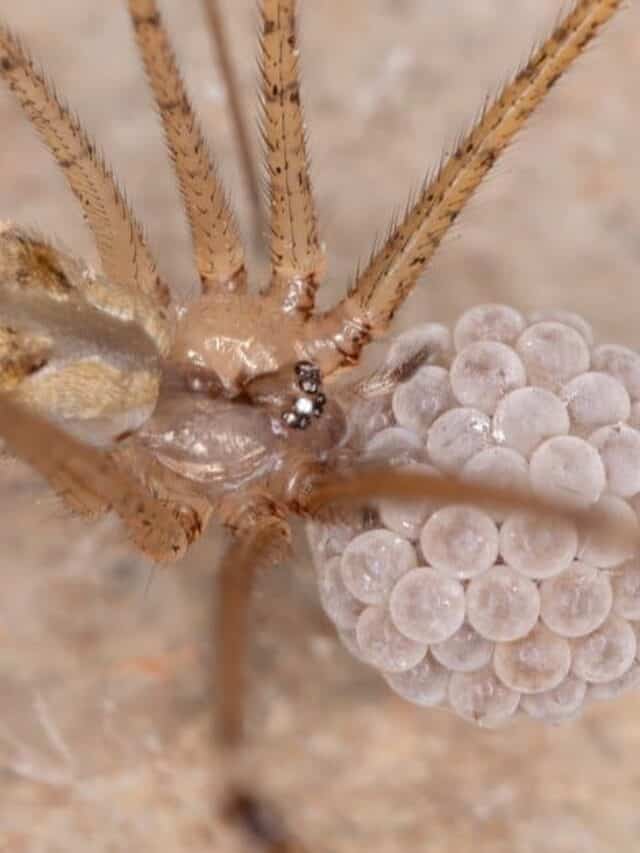
Some spiders can lay up to 3.000 eggs at once.
©Vinicius R. Souza/Shutterstock.com
Spiders reproduce in a variety of ways, depending on the species. Most spiders lay eggs and store them in silken egg sacs that are either attached to their webs or carried by the female until they hatch. Female spiders can also produce live young without fertilization, though this is more common in some species than others.
Once hatched, baby spiders go through several stages of growth before becoming adults. During these stages, called instars, they shed their exoskeleton multiple times as they grow bigger and stronger. After reaching adulthood, most spiders will only live for one or two years before dying off naturally due to old age or predation from other animals.
Conservation and Population
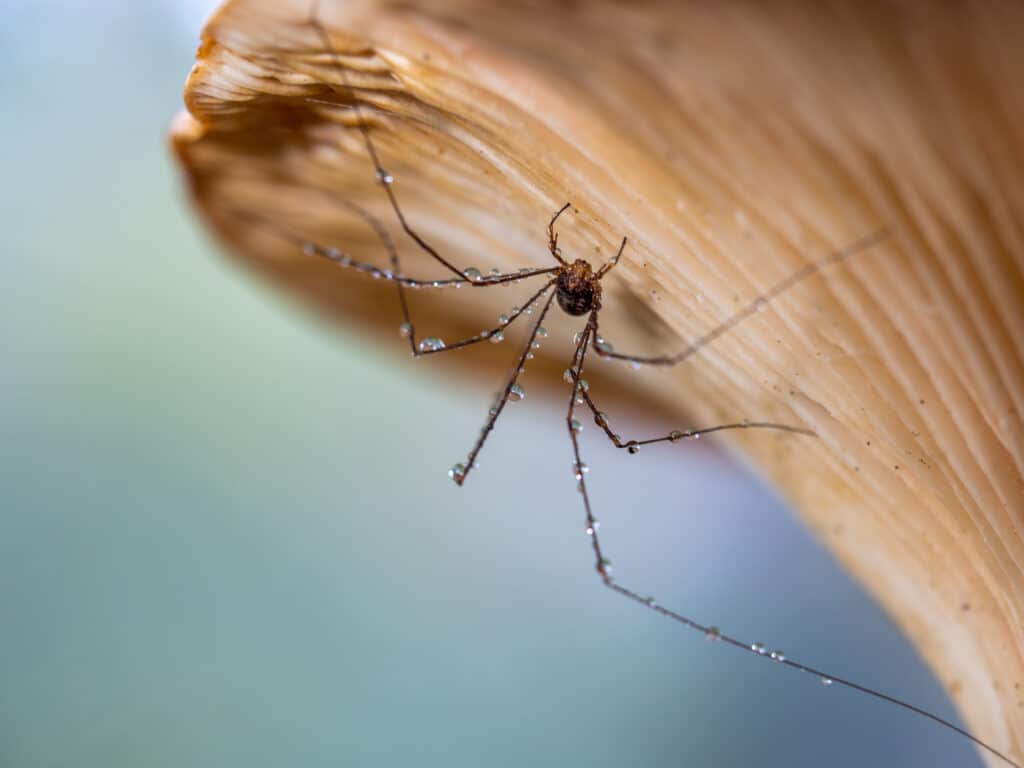
Bone cave harvestman spiders are endangered species.
©Stephan Morris/Shutterstock.com
There are a variety of threats that have led to the endangerment of 27 species of spiders. These include habitat loss or fragmentation due to human development, climate change, pollution, and disease. Loss or degradation of their habitats can cause significant population decline for these species as they struggle to survive in a new environment. Pesticides used on crops can also be toxic to spiders, reducing populations and even leading to extinction in some cases.
Two examples of endangered spider species are the Regal Jumping Spider (Phidippus regius) and the Hentz Orbweaver (Neoscona crucifera). The Regal Jumping Spider is native to North America and is threatened by the destruction or alteration of its natural habitat due to urban development. The Hentz Orbweaver is found primarily in the southeastern United States and faces similar threats from land-use changes caused by humans, such as deforestation for livestock grazing and urban sprawl.
Types of Spiders
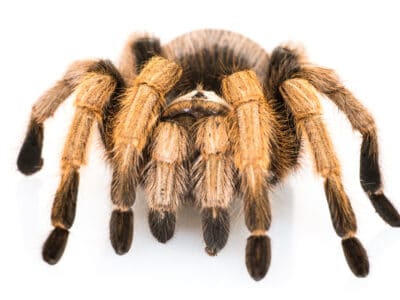
Arizona Blonde Tarantula
They are covered in thousands of fuzzy blonde hairs.
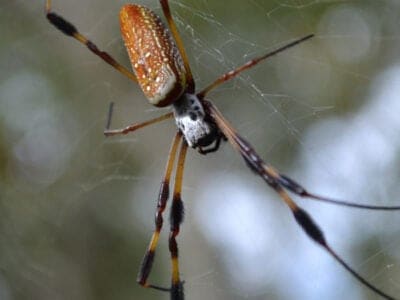
Banana Spider
People spin clothing and fishing nets out of these spiders’ silk.
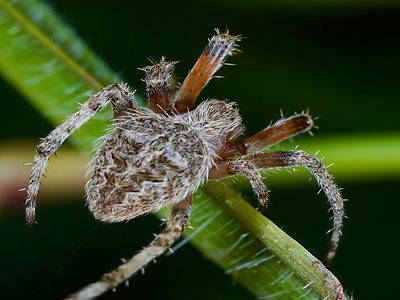
Barn Spider
Common barn dwelling spider
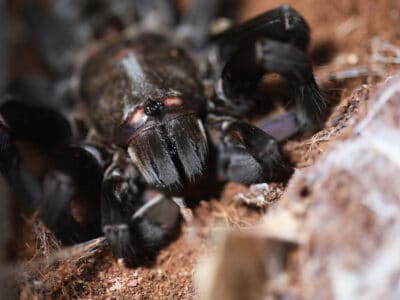
Black Tarantula
They can grow to be 7 inches long!

Black Widow Spider
They typically prey on insects!
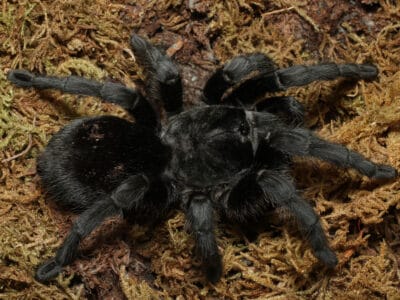
Brazilian Black Tarantula
They seem to move in slow motion.

California Tarantula
They can go for months without eating!
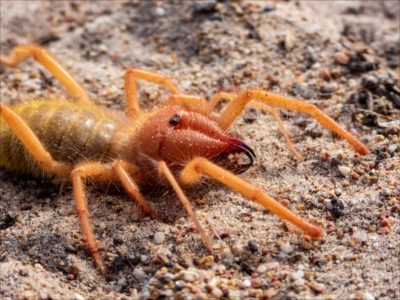
Camel Spider
Fast, carnivorous arachnid with a painful bite.
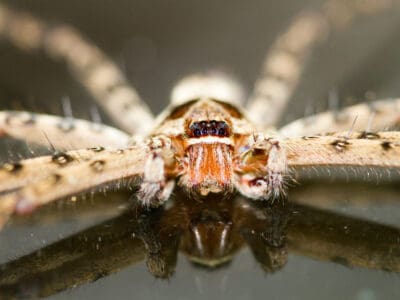
Cane Spider
Cane spiders don't spin webs to catch prey
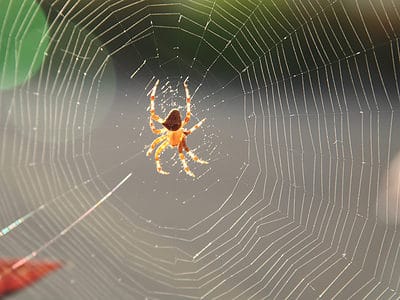
Cat-Faced Spider
Female cat-faced spiders die off shortly after laying their egg.
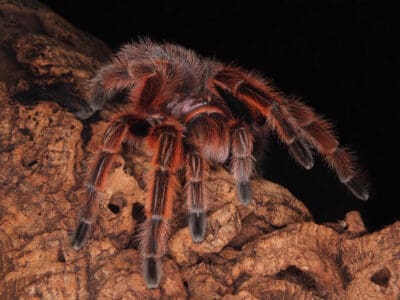
Chilean Rose Tarantula
They can cling to the side of an aquarium.

Clock Spider
Males make a rhythmic thrumming like a clock

Common House Spider
House spiders have the ability to eat most insects in a home.

Crab Spider
Crab Spiders can mimic ants or bird droppings

False Widow Spider
False spiders actually prey on black widow spiders and other hazardous spiders
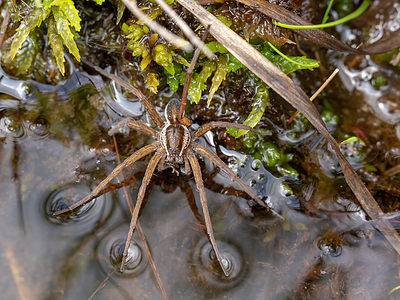
Fishing Spiders
Fishing spiders have hydrophobic hair on their skin that allows them to survive on water
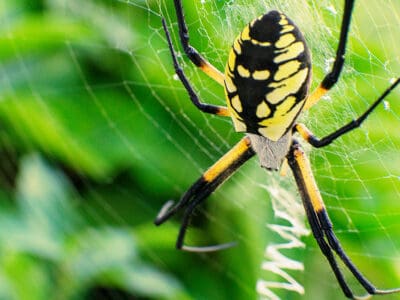
Garden Spider
Garden spiders bounce in their webs to confuse predators
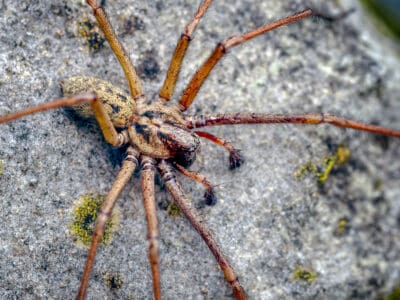
Giant House Spider
They are the fastest invertebrates in the U.K.
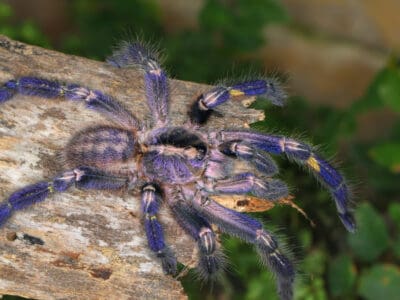
Gooty Sapphire Tarantula
They can run up a tree trunk surprisingly fast.
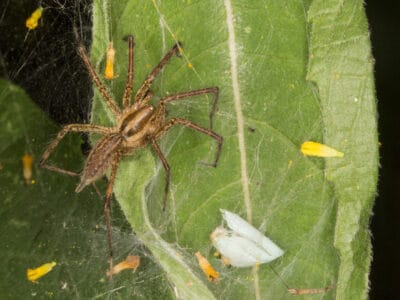
Grass Spider
Their fangs aren't big enough to penetrate human skin.
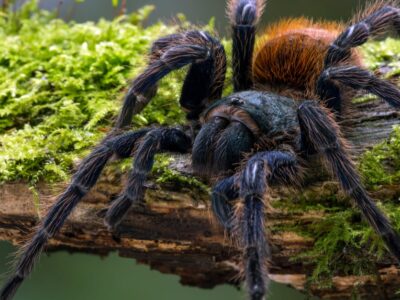
Green Bottle Blue Tarantula
The spiderlings look very different than the adults.

Huntsman Spider
Some huntsman spiders have an interesting way of moving around. Some cartwheel while others do handsprings or backflips.
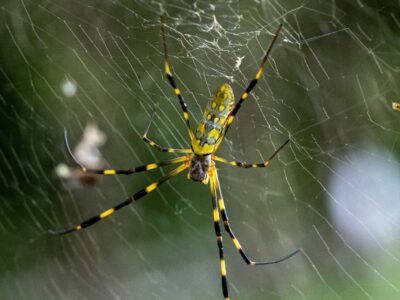
Joro Spider
Shares its name with a Japanese "spider demon"!

Jumping Spider
Some can jump 50 times the length of their bodies
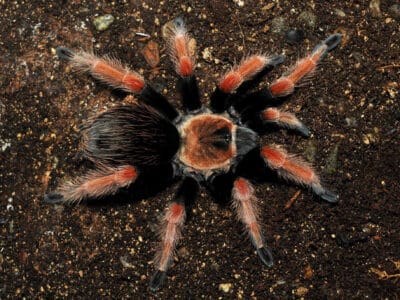
Mexican Fireleg Tarantula
Mexican fireleg tarantulas have bright reddish-orange legs.
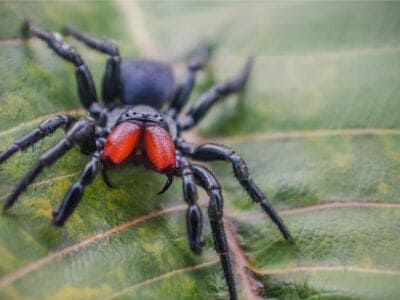
Mouse Spider
The female mouse spider is rarely seen because they don't leave their burrows.
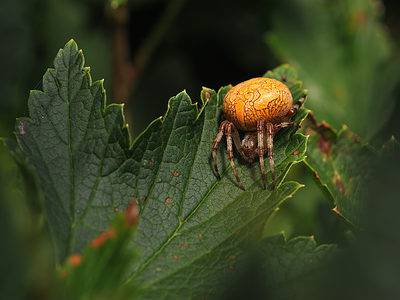
Orange Spider
Orange spiders make vertically-oriented webs for catching prey.

Orb Weaver
Females are about four times the size of males
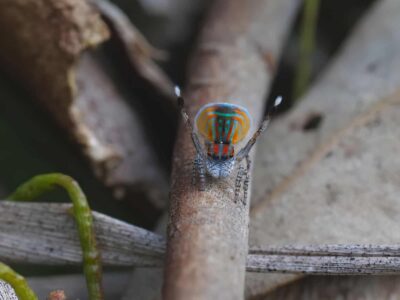
Peacock Spider
They can jump up to 10 centimeters (40 times their body size) and see the full rainbow spectrum of light, including UV.
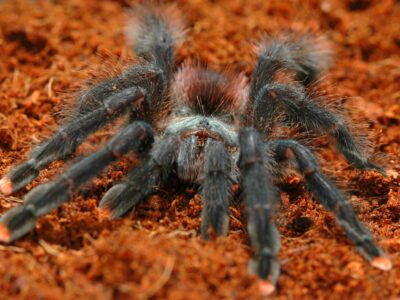
Pink Toed Tarantula
Can jump short distances
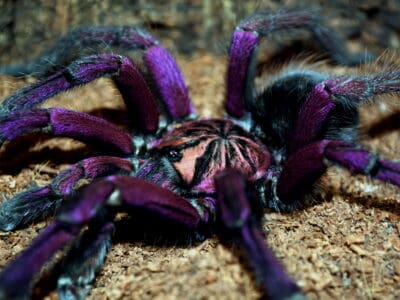
Purple Tarantula
Females live more than twice as long as males, up to 12 years old.
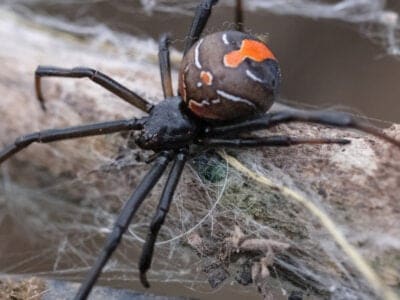
Redback Spider
The redback spiders found in New Caledonia differ from other populations in that they don’t practice sexual cannibalism and don’t bite people as much.
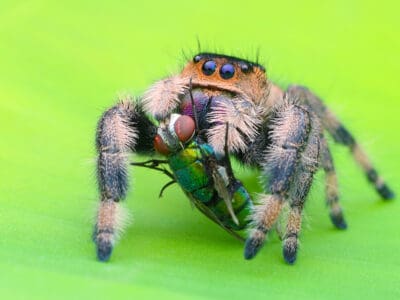
Regal Jumping Spider
The regal jumping spider is the largest jumping spider in North America
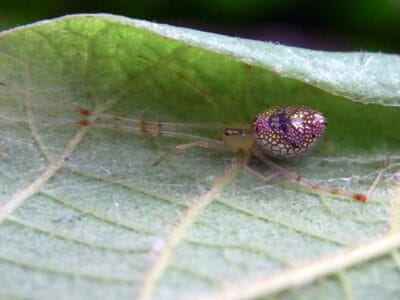
Sequined Spider
You may even be able to see a reflection in their reflective sequins!
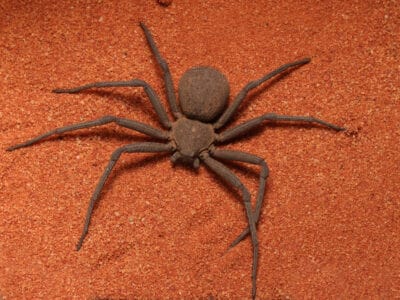
Six-Eyed Sand Spiders
Camouflaged recluse with terrifying venom
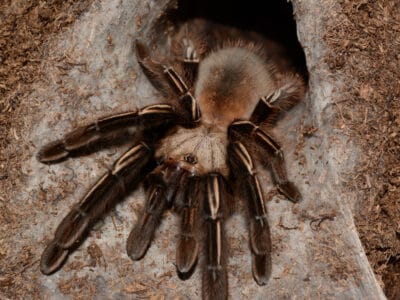
Skeleton Tarantula
50-100
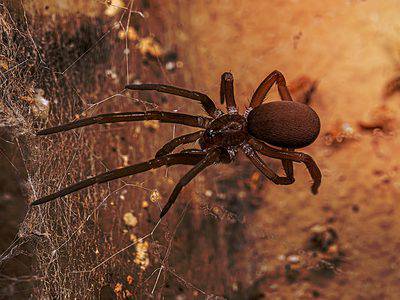
Southern House Spider
Large web making house spider

Texas Brown Tarantula
You may see a mass migration of tarantulas in late summer or fall.

Trapdoor spider
Ambush their prey using a trapdoor made of silk
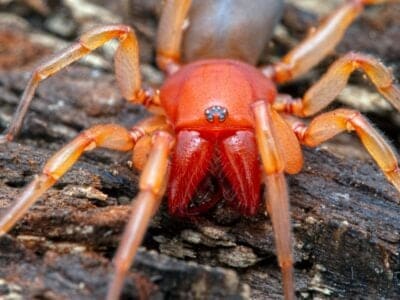
Woodlouse Spider
Unlike most spiders, woodlouse spiders don’t build a web.
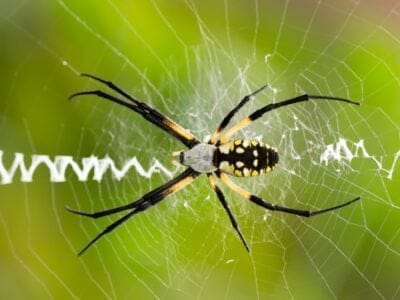
Writing Spider
males pluck webs like strings on a guitar

Yellow Sac Spider
Primarily Carnivorous, but sometimes snacks on nectar.

Zebra Tarantula
They can stay hidden in their burrows for months!
Spider FAQs (Frequently Asked Questions)
Do spiders eat snakes?
Yes, studies have shown that about 40 species of spiders will actively hunt snakes. While most species of spiders are simply too small to eat snakes, venomous species like redbacks and widows will often hunt them.
Are spiders or snakes more deadly?
While certain species of both spiders and snakes are venomous, snakes are objectively more deadly to humans. First, about 6.67% of snake species pose a real threat to humans while just .06% of spider species do. That is to say, venomous snakes are far more common than spiders. Second, snakes are estimated to cause between 81,000 and 138,000 deaths per year while estimates of deaths from spiders are likely less than 1,000 annually.
What are some extinct spiders?
Ancestors of spiders existed up to 400 million years ago. However, the oldest true spiders were believed to have first appeared about 300 million years ago. By the Jurassic era, spiders with sophisticated webs like Mongolarachne jurassica began appearing.
What are the key differences between old-world tarantulas and new-world tarantulas?
The key differences between old-world tarantulas and new-world tarantulas include geographic location, urticating hairs, aggression, agility, and speed.
Thank you for reading! Have some feedback for us? Contact the AZ Animals editorial team.





